|
This article is also available as a PowerPoint here.
The Great War Contemporaries called it The Great War because it was literally greater than any war ever waged before that time. In numbers of soldiers involved, in numbers of casualties, in terms of the disastrous consequences, it was the most catastrophic event in the history of civilization. When Christians Ruled the World In 1914, Christian nations ruled virtually the whole world. With the exception of China, Japan and the Ottoman Empire, the globe was dominated by Christian powers, either Protestant, as in the case of Britain, Germany and the United States, Roman Catholic as in the case of the Austria Hungarian Empire, Italy, Spain, Portugal and the French Empire, or Orthodox as in the case of the Russian Empire. Evangelising the Nations Christianity came to the beginning of the 20th century on a rising, and apparently unstoppable, tide. Christianity was gaining spectacular momentum as Missionaries from Europe were Evangelising and discipling every tribe and nation. The Protestant Faith had far outstripped the Catholic and Orthodox branches in missionary activity, vitality and initiative. Anticipating the Completion of the Great Commission At the world's first Missions Conference, held in Edinburgh, 1910, delegates were anticipating the completion of the Great Commission within their generation. The consensus at Edinburgh 1910 was that every nation would be thoroughly Evangelised and discipled, and all false religions extinct, by 1960. Retreat from Victory Had present trends continued, that was a realistic scenario. Nothing could have stopped the positive onward march of Christianity worldwide, except that Christians were persuaded to kill one another so enthusiastically and so efficiently. Technological Innovations World War I saw such spectacular technological advances in warfare as submarines and aircraft used in war, flame throwers, gas and tanks. 20th Century Weapons – But 14th Century Tactics However, these 20th century weapons were being used alongside 19th century tactics. Of the 65 million European soldiers who were mobilized from 1914 to 1918, over 9 million were killed, 9 million were permanently disabled, and 15 million were seriously injured. Total Mobilisation Russia mobilised 12 million soldiers, Germany 11 million, France 8.4 million, Great Britain 8.9 million, (over 250,000 under-age boys served in the British Army, including one who was discovered to be just 12 years old. Average life expectancy in the trenches was about 6 weeks), Italy 5.6 million, Austria 7.8 million and the USA 4.3 million. The Butchers Bill The results were devastating. The London Times of 24 July 1916, during the Battle of the Somme, listed 608 British officer casualties and 5,500 other ranks. This was just one day's casualty list. 8% of Great Britain's total population were killed or wounded, 9% of Germany's total population were killed, or wounded, and 11% of France's entire population were casualties. The British Empire lost 908,371 people; Russia lost 1,700,000; France lost 1,357,800; Germany lost 1,773,700 soldiers killed. This did not include the many hundreds-of-thousands of civilians who died of starvation due to the naval blockade. Diseases accounted for one third of the deaths during the war. The British Army recorded 150,000 soldiers coming down with venereal diseases. More men died in action on the last day of WWI (11/11/18) than on D-Day (6/6/44). Women in Factories With so many men mobilised for war, millions of women were mobilised to fill their places in the work places, in factories and on farms. More than one million women in Britain were mobilised into work places previously performed by men. Those women who worked with TNT found that their skin turned yellow through toxic jaundice. The mobilising of millions of women into factories and fields to take the place of men conscripted into the war, transformed the social order and eroded the stability of families as a generation of children were deprived of their influence of both mother and father at home. Logistical Nightmare Over 25,000 miles of trenches were dug on the Western Front across France and Belgium. During the four years of the war, Great Britain shipped 25 million tonnes of supplies to their forces on the Western front, including 3 million tonnes of food and 5 million tonnes of oats and hay for the horses. The British postal service delivered 2 billion letters to soldiers at the front and 114 million parcels during WWI. Trench Diet The most common meal for soldiers on the Western Front was a stew of turnips, potatoes and carrots, supplemented with occasional bully beef and marmite. Tea tasted horrible due to the chlorine and lime used to purify the water. Ruinous Costs The costs of the war for Britain alone, was £6 million a day. In one 24-hour period, £4 million bullets were fired by British soldiers on the Western Front. The total cost of the First World War for Britain was US$186.3 billion. Crippling War Debts The crippling debts incurred by the cost of the war and loss of productivity, led to widespread poverty, famine and hardship as prices soared, but wages lagged far behind. Taxes increased throughout the world to fund the ruinous war debts creating discontent throughout the empires and colonies of Europe. Passchendaele During one battle in Flanders, Belgium, 5 million artillery shells were fired by the British artillery, in a 3-day period, along a ten mile front. An average of 5 tonnes of high explosive was placed on every square meter, turning the ground into mud, which swallowed entire units, cavalry and artillery of the British and Canadian forces ordered into this quagmire of Passchendaele. Chemical Warfare It is not true that the first chemical and biological warfare in history was in WWI. The Spartans are recorded as having used sulphur and pitch to overcome the enemy in the Peloponnesian War, 500BC. The first use of gas in warfare was originated by the French against German troops in August 1914, as the French Army fired gas grenades (Xylyl Bromide), in the first month of the war. In January 1915 the Germans first used tear gas against Russian armies on the Eastern Front, but the gas turned to liquid in the cold air. In April 1915, Chlorine gas was used near Ypres on the Western Front. The British, French and Germans released over 130,000 tonnes of gas on the Western front, affecting 1.2 million soldiers, of which 91,198 died. Artillery Most Deadly
Most combat deaths in WWI were due to artillery, over 60% of all casualties were caused by artillery barrages. In 1914, no soldiers had metal helmets. The French were the first to introduce metal helmets in 1915. Pool of Peace The pool of peace is a 40 foot deep lake near Messines, Belgium. It fills a crater made in 1917, when the British detonated a mine containing 45 tonnes of explosives. This explosion could be heard as far away as London. Dog Fights The term 'dog fight' originated during WWI. During aerial engagements, pilots sometimes turned off their aircraft engine, so as not to stall when banking abruptly in the air. As the pilot restarted his engine in mid-air, it sounded like dogs barking. Assassination in Sarajevo WWI was sparked by the assassination, in Sarajevo, of Archduke Franz Ferdinand and his wife, Sophie, on 28 June 1914. Gavrilo Princip, a 17-year old Serbian terrorist of the Black Hand murdered the heir to the Austria-Hungarian throne and provoked the mobilisation that quickly enflamed Europe. The War Between Cousins Kaiser Wilhelm II of Germany, Tsar Nicholas II of Russia and George V of Britain were all grandchildren of Queen Victoria and first cousins. Medical Advances Great medical advances were made during WWI in wound management, blood transfusions, blood banks, setting of bones, skin grafts, plastic surgery and facial reconstruction. Influenza Pandemic The Spanish influenza epidemic, which demobilised soldiers brought back home, wiped out even more people than had died in the War (15 million died of flu in Europe). 3-5% of the world's population died in the influenza epidemic of 1918. 12 million died in India alone. The influenza epidemic killed 25 million people in just 25 weeks (by way of comparison, AIDS killed 25 million people over 25 years). The Influenza epidemic killed 675,000 Americans (six times more than their war deaths), 50,000 Canadians and 228,000 British. Half of all the victims of the Influenza epidemic were between the ages of 20-40 years old. Hamilton of Majuba General Sir Ian Hamilton, who commanded the Allied forces in the disastrous Gallipoli campaign was a veteran of both Anglo-Boer Wars (1880-1881 and 1899-1902). He had been captured by Boer forces at the Battle of Majuba, where he was wounded in the left wrist. Authors at War Numerous famous authors such as C.S. Lewis (of the Narnia series), J.R.R. Tolkien (who was born in Bloemfontein), who wrote Lord of the Rings, and A.A. Milne (creator of Winnie the Pooh), fought on the Western Front. The Christmas Truce On Christmas Eve 1914 a spontaneous cease fire was observed across the whole of the Western Front. Beginning at Ypres, Belgium, as German soldiers placed Christmas trees on top of their trench parapets and sang Silent Night, British soldiers joined in, and soon Australian, New Zealand, French, British and German soldiers were singing Christmas carols, exchanging gifts and conducting church services together. On Christmas Day Football matches were played in no-man's land as the competing armies mingled and enjoyed fellowship together, even visiting one another's trenches. Animals at War More than 100,000 homing pigeons were used by the British Army alone. At the height of the war, the British Army employed 870,000 horses. Dogs were also employed to lay telephone lines between trenches. The Royal Flying Corp The Royal Flying Corp (RFC) of Great Britain recruited sporting men who could ride a horse, or drive a car, for pilot training. 8,000 young men in Britain died during fight training. This means that more British airmen died from accidents and equipment failures than from enemy action. Most RFC pilots survived only an average of three weeks, once arriving on the Western Front. One third of all RFC pilots were Canadians. The Red Baron The most successful fighter pilot was German Cavalry officer, Baron Manfred von Richthofen (1892-1918). He shot down 80 enemy aircraft in just 16 months. The French Mutiny In May 1917, half of the French Army mutinied. With over a million deaths already in the war, and decimated in another disastrous failure of an offensive, 20,000 French troops deserted outright and the rest refused to obey orders. The French government clamped a veil of secrecy over the whole affair, but it is known that at least 500 French soldiers were sentenced to death officially, and the Commander-in-Chief, General Nivelle, was removed. Resistance in South Africa Numerous respected South African leaders opposed South Africa's involvement in the World War. President Martinus Steyn of the Orange Free State, General Christiaan De Wet, General De La Rey and Chief of the Union Defence Force, General Christiaan Beyers, actively campaigned against fighting for their previous enemies against their previous allies, just 12 years after the Anglo-Boer War. General De La Rey was shot by police at a roadblock and General Christiaan De Wet was imprisoned in the fort in Johannesburg for opposing the war. The Devils Wood At one battle, Delville Wood, in France on 15 July 1916, the South African Infantry Brigade under Major General Lukin, was ordered to occupy the Wood and protect the flanks of the British Brigade. After 6 days and 5 nights of ferocious fighting, only 750 soldiers remained of the Brigade's 3,433 soldiers. Of the 146,000 South Africans who volunteered for service in WWI, 7,000 were killed and 12,000 wounded. South Africa's involvement in the First World War cost our taxpayers US$300 million. The Secularisation of Europe Even more devastating than the actual numbers of people killed, crippled, or severely injured, was the damage to the spiritual life of Europe. Europe went from being a majority church attending population to a continent where most people did not go to any church. Along with the spiritual decline of Europe came the decline of Western Europe in the total world scene. The secularisation of Europe and the breakdown of moral standards coincided with the great resurgence of Revolutionary fervour. Communism Exploited the Vacuum Marxist Communism filled the vacuum left by the collapse of the Russian Empire and by the emergence of many new countries in Eastern Europe, which the Versailles Treaty carved out of the old Austrian and German Empires. Continental Suicide The 19th century had seen such staggering growth in numbers, productivity, military power and wealth, that one would have expected that Europe would have continued to dominate the globe for centuries to come. For over a thousand years, Europe had been Christendom, the heartland and stronghold of Christian civilisation. The optimism which had prevailed in the 19th century, the greatest century of Missions, gave way to profound pessimism after the First World War. The de-Christianisation and secularisation of Europe was not only unprecedented in its speed and scope, but it would have been unthinkable before the First World War. Self-Destructive Ideology Social Darwinism had become popular among many of the governments of Europe. This thinking emphasized the importance of armed struggle between nations as healthy and necessary for evolution and progress. Cataclysm Never before, had so much of mankind been engaged simultaneously in war. Never before had mankind massed such large armies, or produced such weapons, which worked wholesale destruction on so gigantic a scale. War Profiteers The sinister bankers who pulled the strings behind the scenes and engineered the auto genocide of Europe, were also the ones who owned many of the companies that made the machine guns, bullets, bombs, shells and artillery, that destroyed the cream of Europe. Many bankers and industrialists amassed stupendous wealth at the expense of the combatants who incurred staggering debts. Those who controlled the debt, control everything. Communism benefited the most from the World Wars, seizing and subjugating all of Russia, and in time, most of Eastern Europe. Behind the Scenes There are numerous studies that have shown the role of Freemason bankers and politicians, such as Lord Nathan Rothschild, whose goal was to bring down Christian civilisation. As Nathan Rothschild, declared: "I care not what puppet is placed upon the Throne of England to rule the Empire on which the sun never sets. The man who controls Britain's money supply, controls the British Empire and I control the British money supply!" There certainly were major conflicts of interests involved as the bankers, war profiteers and key members of the war cabinet, were in fact often one and the same people. The Versailles Treaty The vindictive Versailles Treaty of 1919 brought about the economic and political collapse of Germany, which led to the Great Depression and made a Second World War inevitable. As Marshall Ferdinand Foch, declared of Versailles: "This is not peace. It is an armistice for twenty years!" The Communist Enslavement of Russia The most significant political consequence of WWI was the Revolution that transformed Christian Russia into the Union of Soviet Socialist Republics (USSR), which chewed up over 50 million of its citizens in the over 1,200 concentration camps of the Gulag Archipelago and murdered another 66 million people. 100,000 Churches were confiscated, or destroyed, by the Communists in Russia, including 48,000 church buildings that were destroyed. Post-Christian Pessimism In the wake of the First Word War, many came to speak of a post-Christian era. As wars and revolutions threw the entire world into disorder, pessimists and critics predicted the imminent disappearance of Christianity. Yet, against all odds, despite having being dealt with what seemed like a death blow in its heartland, Protestant Christians showed remarkable vitality. Overcoming All Opposition As Christians had overcome the Roman Empire, the Barbarians and Viking invasions, the Arab invasions, the onslaught of the Mongols, the Bubonic plague and the invasions of the Turks, then the upheavals of the French Revolution, Christians adapted and overcame. Christianity experienced dynamic growth in Africa, the Americas and Asia. Even in Eastern Europe, in some of the most unexpected places, behind the Iron Curtain, churches multiplied and Faith deepened, despite the most relentless and anti-Christian persecution by communist governments. "Now these things became our examples, to the intent that we should not lust after evil things as they also lusted. And do not become idolaters as were some of them… Now all these things happened to them as examples, and they were written for our admonition..." 1 Corinthians 10:6-11 Dr. Peter Hammond The Reformation Society P.O. Box 74 Newlands 7725 Cape Town South Africa Tel: 021-689-4480 Fax: 021-685-5884 Email: [email protected] Website: www.ReformationSA.org See also: Brest-Litovsk and the Present Day Boundaries of Eastern Europe The Best of Enemies The Causes, Consequences and Catastrophe of the First World War How Propaganda Changes Perceptions and People
0 Comments
Leave a Reply. |
Archives
July 2024
Categories
All
|
"And Jesus came and spoke to them, saying, “All authority has been given to Me in heaven and on earth.
Go therefore and make disciples of all the nations, baptizing them in the name of the Father and of the Son and of the Holy Spirit,
teaching them to observe all things that I have commanded you; and lo, I am with you always, even to the end of the age.” Amen.” Matthew 28: 18-20
Go therefore and make disciples of all the nations, baptizing them in the name of the Father and of the Son and of the Holy Spirit,
teaching them to observe all things that I have commanded you; and lo, I am with you always, even to the end of the age.” Amen.” Matthew 28: 18-20
|
P.O.Box 74 Newlands 7725
Cape Town South Africa |
|
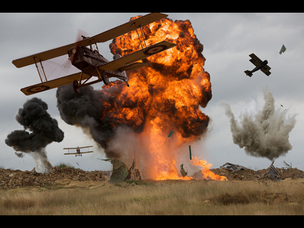
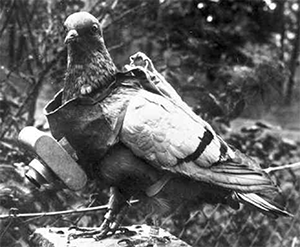
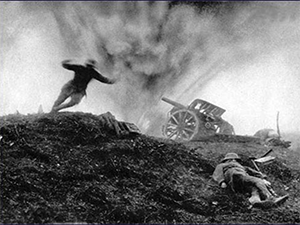
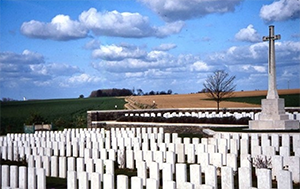
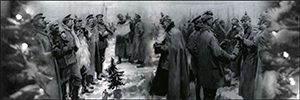
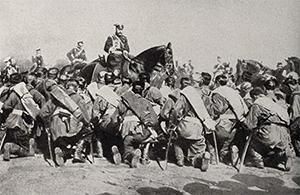
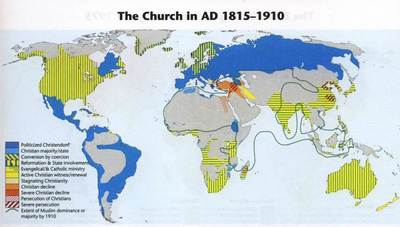
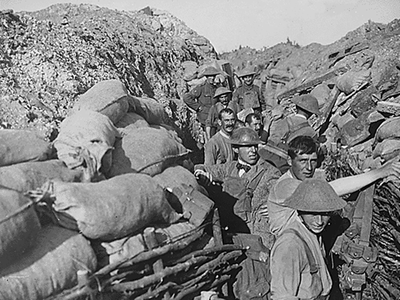

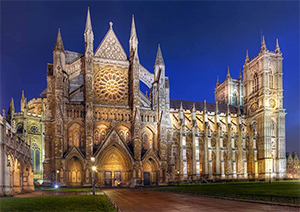
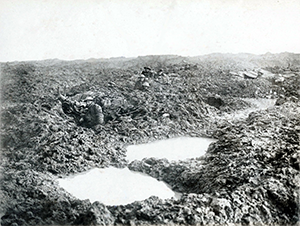

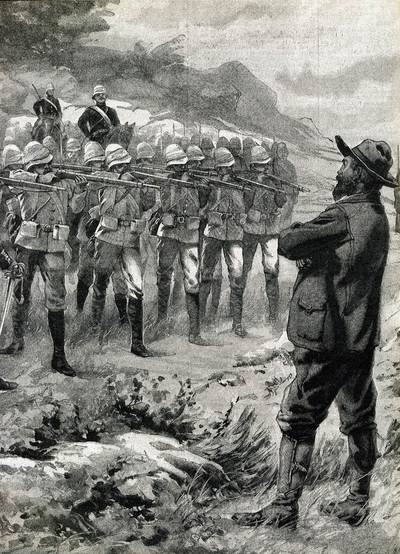
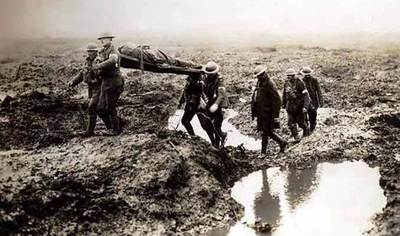
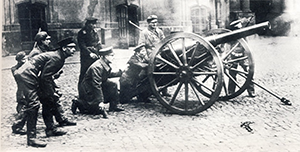

 RSS Feed
RSS Feed
